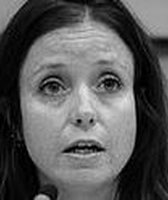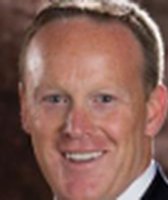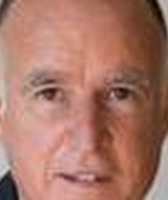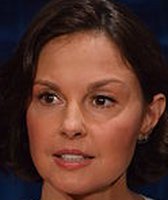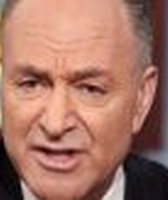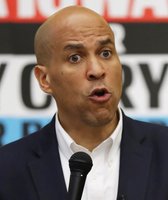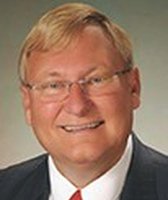Get PolitiFact in your inbox.
With promises of lower costs and health care for every American, Bernie Sanders’ pitch for a single-payer system sounds like a no-brainer for the country’s bottom line.
But would it actually work?
CNN’s Dana Bash asked the Democratic presidential candidate about the reality of his signature proposal Jan. 3 on State of the Union.
"You really can pay for that without raising taxes on the middle class?" Bash asked. "It just seems hard to believe."
"There are a variety of ways to go forward, Dana," Sanders said. "Our proposal will save the average middle-class family thousands of dollars a year in health care."
Bash and Sanders had a similar exchange about his plan after President Barack Obama’s State of the Union on Jan. 12, 2016, with Sanders insisting it will save the middle class thousands.
Sanders’ proposal is one of the centerpieces of his campaign, so we wanted to examine it in detail. We found that it’s possible the middle class could see savings, but experts disagreed on whether Sanders’ plan pays for itself, based on what he’s laid out so far. The plan seems to rely on the most optimistic scenario for cost savings and efficiency.
Prescribed savings
Sanders proposes to expand Medicare, the health safety net that covers those over 65, to all Americans. He hasn’t released a full plan yet, but he points to previous legislation he’s introduced, namely a 2013 bill for a single-payer Medicare-for-all system, as his general gameplan.
To pay for it, Sanders would impose broad-based taxes: a 6.7 percent payroll tax on employers and a 2.2 percent tax on individual incomes under $200,000 or joint incomes under $250,000. (Progressively higher rates for higher-income earners are described in his 2013 bill.)
Sanders’ campaign says his Medicare-for-all plan would save the average American family $3,855 to $5,173 in annual health care costs.
Instead of an insurance premium, a family making $50,000 — roughly the median family income — would only pay $1,100 in health care income taxes. That’s $3,855 less than what it would pay out-of-pocket for the average premium ($4,955, according to the Kaiser Family Foundation) and $5,173 less if a deductible ($1,318, for individual coverage) is factored in.
As for employers, the 6.7 percent payroll tax means employers would put up $3,350 for family coverage. That’s also thousands less than the average employer premium contribution of $12,591.
Health policy experts say, however, that listing the health care income tax as the only cost to families is misleading.
Missing details
It’s unclear whether Sanders would eliminate deductibles and co-pays. These costs currently exist under Medicare, and his 2013 bill makes no mention of changing the system. But the breakdown from his campaign lists both as $0.
The 6.7 percent payroll tax should also be counted as a worker cost, since it most likely would come out of wages rather than employers’ pockets, experts said. That’s because the sticker price of employer-based insurance isn’t what employers are actually spending.
Employers "pay nothing for insurance in reality," as health care is a fringe benefit of a total compensation package, said Gerard Anderson, a professor of health policy at Johns Hopkins University. So when employers stop providing insurance and are required to pay into single-payer, less money will be available for paychecks.
With this adjustment, the average family would save $505 to $1,823 a year.
Like a free lunch, of course, there ain’t no such thing as free health care. So where is the money to provide universal coverage coming from?
A clean bill of health?
As far as we can tell, Sanders’ plan has not yet been analyzed by independent think tanks or academics. So we ran back-of-the-envelope estimates for revenue from Sanders’ health care taxes using 2013 tax return data from the Internal Revenue Service.
By our napkin calculations, those making more than $200,000 — roughly the top 5 percent of income earners — would contribute about $117 billion to the single-payer system, while everyone else would pay in $126 billion. Payroll taxes yield an additional $432 billion for a total of $675 billion.
That’s still $599 billion short of what the country actually spent on health care in 2013 ($949 billion in premiums and $325 billion for out-of-pocket expenses, according to the Centers for Medicare and Medicaid Services).
Sanders says his system would make up for that shortfall by trimming costs, as the government would have more leverage to negotiate with health providers.
Experts agreed that single-payer gets you more bang for your buck by reducing administrative overhead, hospital and doctor's’ fees, and prescription drug prices. But some say Sanders is overestimating the potential reductions.
With Sanders’ proposed taxes, costs would need to be trimmed by roughly 42 to 47 percent — a tall order when "the most generous estimates of how much you could cut cost are on the order of 20 percent," said Sherry Glied, a professor of health policy and economics at New York University who’s served in the George H.W. Bush, Clinton and Obama administrations.
"And there are a lot of people who don’t believe those numbers are possible," she said. "Single-payer saves money, but it doesn’t save all the money in the system."
Joseph Antos, a health policy economist with the conservative American Enterprise Institute, said, "The kind of money he’s talking about goes way beyond any plausible guess about how much inefficiency can be ‘wrung out of the system’ — a phrase that makes one think this should be easy when it is very difficult to do."
Brighter views
Others, however, are more optimistic that Sanders’ plan could be actuarially sound.
"The tax rates are probably on the low side of what would be necessary, but not out of the ballpark," said Peter Hussey, a healthy policy analyst at the RAND Corporation, adding that they would work only with significant cost savings and lower benefits.
Hussey pointed to other financing models with higher taxes. In Sanders’ own Vermont, the proposed single-payer state system would require a payroll tax of 11.5 percent and a sliding income tax of 0 to 9.5 percent. A national single-payer system would require a payroll tax of 11.7 percent, according to the National Institute for Health Care Reform.
Gerald Friedman, a health economist at the University of Massachusetts Amherst, analyzed a different 2013 Medicare-for-all bill proposed by Rep. John Conyers, D-Mich., and concluded it would be enough to cover everyone, upgrade benefits and save the country $5 trillion over a decade.
But beyond a 6-percent income tax and a sliding payroll tax of 3 to 6 percent, that would require a financial transaction tax (Sanders included this in his 2013 bill but has since committed the tax to free college tuition) as well an estate tax, a capital gains tax and a cap on high-income tax deductions. (Sanders has proposed these but hasn’t said they’ll be used to pay for health care.)
Friedman calculated that with the extra taxes and some tweaks, Sanders’ plan would provide ample coverage and even generate a surplus of $51 billion. Meanwhile, he said, middle-class families would still save thousands, inequality in care and costs would be dramatically reduced, and the overall population would be healthier.
Bitter pills
Even if we set aside the issue of a potentially unbalanced ledger, experts point out several other problems with Sanders’ simple promise of savings.
First, it’s not guaranteed that workers will have the same quality or amount of care under a Medicare-for-all system.
Most employer-based health insurance policies currently have more comprehensive coverage than traditional Medicare, pointed out William Hsiao, a leading health economist at Harvard University who designed universal coverage systems for Vermont, China, Sweden, and South Africa, to name a few.
While Sanders argues that single-payer will make the health system more efficient, "we have seen no evidence of this from the Medicare program, whose cost has grown substantially faster than the economy for most of the last 50 years," Antos said.
Second, reduced costs could also create issues with access. Lower drug prices limit funding for research and development, lower physicians’ salaries disincentivize people going into medicine, lower fees could bankrupt hospitals, and people would have less choice in health plans, listed Hussey.
And finally, experts expressed skepticism that lawmakers would ever pass Sanders’ single-payer system, which would require a tax increase of hundreds of billions.
"Keep in mind each dollar saved is a reduction in someone’s income, which is part of why this plan is politically untenable," said Don Taylor, a professor of health policy at Duke University. "But if you could wave your hand and do it, we could spend less."
Our Sources
CNN, State of the Union, Jan. 3, 2015
BernieSanders.com, "Medicare for All," July 30, 2015
Congress.gov, "S.1782 - American Health Security Act of 2013," Dec. 9, 2013
Email interview with Warren Gunnels, policy director for Bernie Sanders, Jan. 4, 2015
BernieSanders.com, "The Truth: American Families Save Thousands Under Sanders’ 2013 Health Care Bill," Nov. 18, 2015
Kaiser Family Foundation, "2015 Employer Health Benefits Survey," Sept. 22, 2015
Email interview with Gerald Anderson, professor of health policy at Johns Hopkins University, Jan. 5, 2015
Internal Revenue Service, "Table 1.1 All Returns: Selected Income and Tax Items, Tax Year 2013," accessed Jan. 5, 2015
Internal Revenue Service, "Table 1.4 All Returns: Sources of Income, Adjustments, and Tax Items, by Size of Adjusted Gross Income, Tax Year 2013," accessed Jan. 5, 2015
Centers for Medicare and Medicaid Services, "NHE Tables," accessed Jan. 6, 2015
Email and phone interviews with Sherry Glied, professor of health policy and economics at New York University, Jan. 5-6, 2015
Email interviews with Joseph Antos, health policy economist at the American Enterprise Institute, Jan. 6. 2015
Email interviews with Peter Hussey, healthy policy analyst at the RAND Corporation, Jan. 5-6, 2015
Governor.Vermont.gov, "GOV. SHUMLIN DETAILS HEALTH CARE FINANCING REPORT TO BUSINESS AND CONSUMER ADVISORY COUNCILS," accessed Jan. 6, 2015
National Institute for Health Care Reform, "Health Reform 2.0: Alternate State Waiver Paths Under the Affordable Care Act," Sept. 2015
Gerald Friedman, "Funding HR 676: The Expanded and Improved Medicare for All Act How we can afford a national single-payer health plan," July 31, 2013
Congress.gov, "H.R.676 - Expanded & Improved Medicare For All Act," Feb. 13, 2015
Email and phone interviews with Gerald Friedman, Jan. 4-6, 2015
Calculations by Gerald Friedman
Email interview with William Hsiao, professor of economics and health policy at Harvard University, Jan. 5, 2015
Email interview with Don Taylor, professor of health policy at Duke University, Jan. 6, 2015
Email interview with Gail Wilensky, health economist at Project HOPE, Jan. 5, 2015
Wall Street Journal, "Price Tag of Bernie Sanders's Proposals: $18 Trillion," Sept. 14, 2015
Huffington Post, "An Open Letter to the Wall Street Journal on Its Bernie Sanders Hit Piece," Sept. 15, 2015


